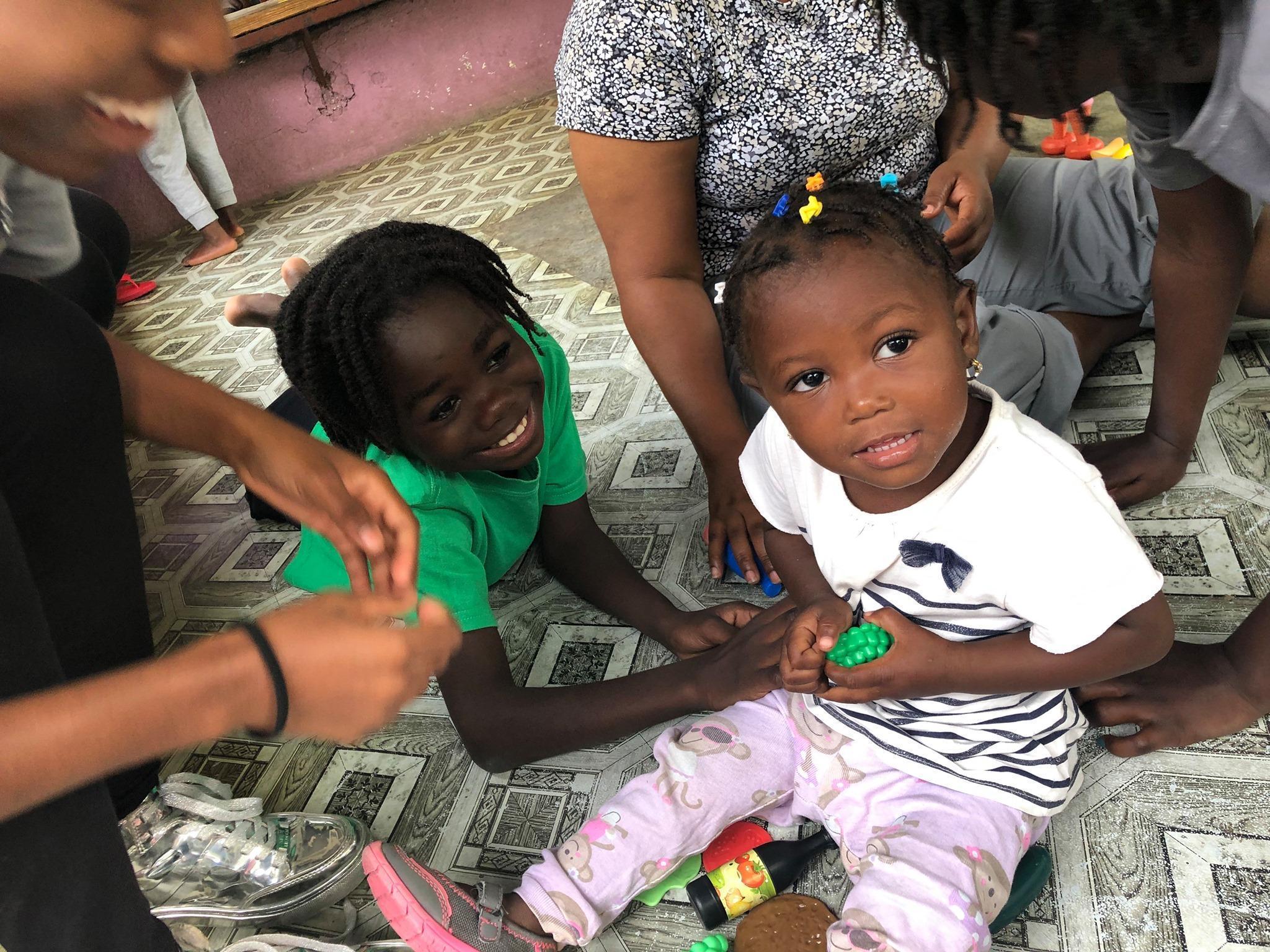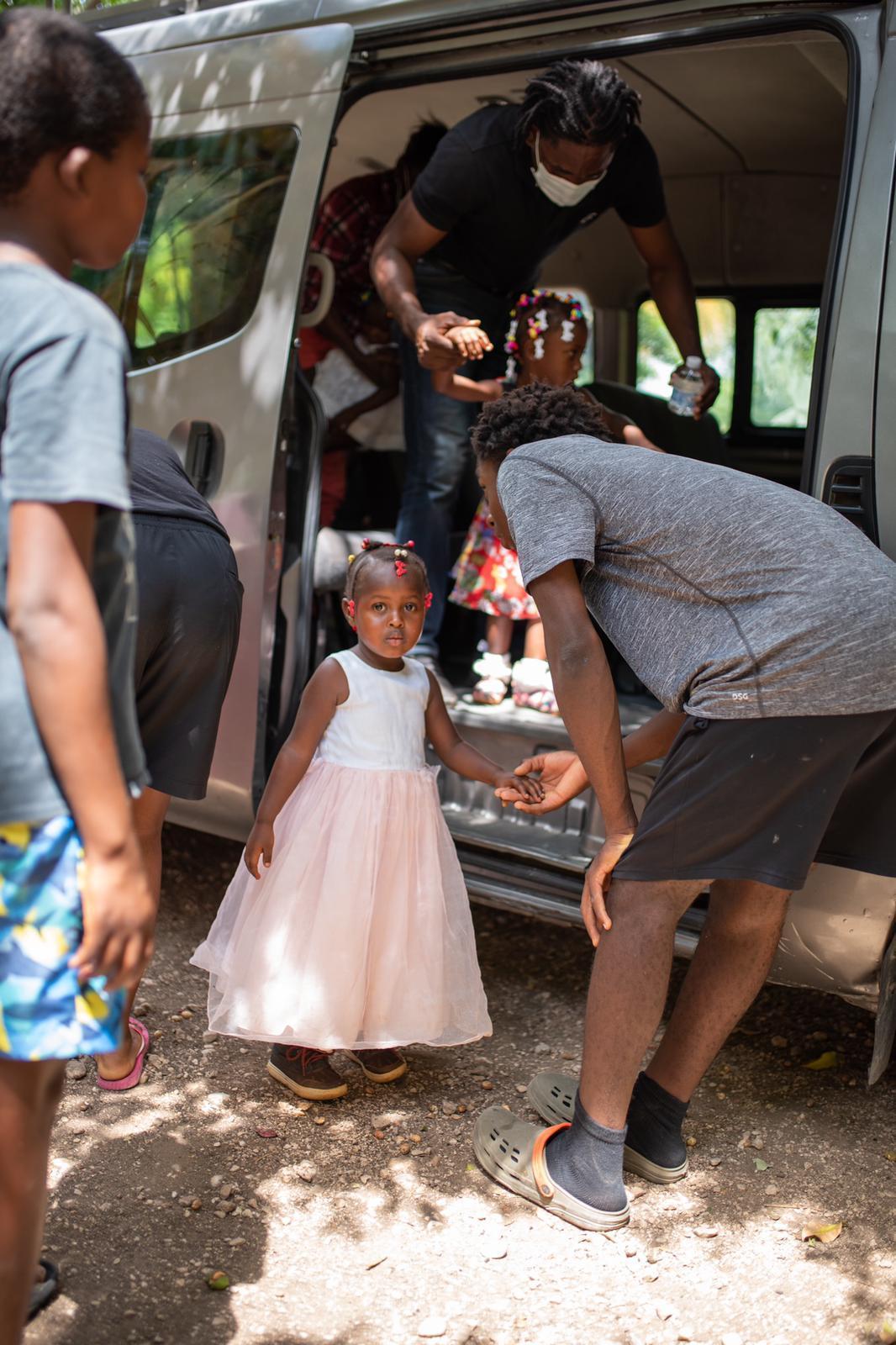👋 and welcome to “Life at the Orphanage,” a newsletter about life for the 50+ children of Have Faith Haiti. Follow along as I share the universal lessons learned watching the purest of childhoods in one of the poorest places on earth.
PORT-AU-PRINCE – Last night I saw a remarkable thing. The winds were picking up in advance of a tropical storm that was working its way across the Caribbean. I was sitting outside the kitchen when out of the darkness I heard the tender sound of a recorder being played. The tune was “Hush Little Baby.”
I peeked over the railing and saw one of our teenagers, Nahoum, sitting crossed legged in the dirt, playing that tune to a new arrival, a three year-old boy named Archange.
Archange, a round-faced child with a shaven scalp and a constant smile, just joined us a few days ago. He was by himself on a plastic mat, because he arrived with scabies.
Scabies is a skin condition caused by tiny little mites that dig into your skin. The region Archange came from is ablaze with it. His arms, feet, fingers and toes were dotted with open sores, some red and blistering. Since scabies is highly contagious, the moment he arrived he had to be separated from the other kids until we could get it under control.
So Nahoum, on his own, decided to make the isolated child feel welcome with his own private concert.
That may strike you as incredibly kind from a teenager, but I must tell you it is fairly common here. If there is one thing all our kids share at the Have Faith Haiti Orphanage, it’s the unnerving moment when they walk through our doors and leave behind everything they knew.
This becomes their new home.
And the other children their new brothers and sisters.

Scabies scars behind the ear of our new arrival Archange, 3. |
How do you take in new kids? We get that question a lot. A more accurate question might be How do you decide what kids you don’t take? Because we say no far more than we can say yes.
Summer is the season we accept new little ones, because it gives them a chance to get acclimated before school starts in September. When I first took over operations here, back in 2010, all we had to do was say we were considering new children and there was a line outside the gates. The earthquake of January 12th left nearly 10 percent of the country homeless and many kids without parents or shelter. We had uncles, aunts, grandparents and neighbors bringing us children whose parents had died.
One man arrived with a young girl, maybe 5 years old. When I asked, “What’s her name?” he didn’t know. He said she’d been wandering around for months, ever since her parents were killed by a falling structure during the earthquake. He said he had been chosen by his village to bring her to us.
Another woman brought us a child who had been left to die under a tree in the woods. When she carried him to the police, she was told, “What did you pick him up for? Now we have to do paperwork.”
Other children were left at malnutrition or medical clinics, nobody claiming them for months, sometimes years. The stories of abandoned children are heartbreaking. So is the process of deciding which to accept. There is simply no way we can take them all in. How do you choose? Every adult who accompanies a child makes a compelling case: there is no money. There is no food. There is no bed. The infant is sick. In danger. He or she will never go to school.
Who do you take? It is a Solomonic decision, one for which I am hardly worthy, but tasked with just the same. We try to apply guidelines. For example, if the children are living with both natural parents, we never take them. No matter how poor or dire the conditions, we always say, “We can’t replace what you have with a mother and a father.” The same goes for shelter. If the child is living with a parent – even a single parent – in a solid structure with toilet access, we generally say no. Not because there aren’t dire cases in such settings. But there are even worse situations – total homelessness, living in tents, living in hovels in the ground – that we feel we must address first.
Our top priority is children with no parents and no permanent home. Even then, in no case do we ever talk a person into giving a child to us. If anything, it’s the opposite. And of course, family members – sisters, brothers, cousins – are allowed and encouraged to visit whenever they can. In no case is a child ever adopted out of our orphanage or taken anywhere else.
Last week, in visiting a group from a village outside of Les Cayes, I was asked by an adult if our children are taken to other countries and given away. When I said of course not, they all shook their heads in relief. The stories of so called “orphanages” that actually are fronts for human trafficking are common enough to frighten people. Understandably so.

One of our new arrivals, Malaya, 4, being held by Enolyka, 15 / Photo by Danielle Cutillo / Courtesy of Have Faith Haiti |
Still, for all the children we accept and agree to raise and nurture until age 18 or the completion of our high school – since my arrival it’s been around 50 kids – the ones we must turn down stay on my mind.
One morning, a few years into being here, a mother brought in a child. He was maybe four or five years old, and wore leather and metal braces on both legs and arms, reminiscent of the young boy scene in “Forrest Gump.” He had special boots. And a cane.
I watched the boy’s labored walk. Despite a forced smile on his face, he could not take two steps without assistance. I knew there was no way we could accommodate a child in this condition, without sacrificing our entire staff to heed his daily needs. What could we do? We had 40 other children at the time. The mother cried. I cried. In the end, we connected her with a doctor and a clinic and, although it is not our usual practice, I gave her money for food and shelter.
Still, I am haunted to this day by that little boy, bound by braces, trying to walk across the floor. What happened to him? Where is he now? Did I do the right thing? Should I have done more?
The yes’s bring challenges.
The no’s bring troubled sleep.

One of our nine new arrivals, Djoulisa, who is not yet two years old. |
This summer, we are taking in nine new children. It’s a lot. Last year, with COVID limiting our staff, we did not take in any. Now, with COVID running rampant, we are doubling our normal intake.
The new children range in age from a diaper-wearing one-year-old girl to a quiet, four year-old boy. Their adjustment is quick. You might think our new kids sit sullen, alone, crying for what they miss. To my surprise, that is not the case. With so many children, so much to do, and so many adults holding and comforting them, the smiles are fast and the exterior adjustment a quick turn from “What is this?” to “What do we do next?” It usually takes less than two days.

A new child, Rosemyca, steps out of the van and is immediately greeted by her new older “brothers” Edney and Kiki / Photo by Danielle Cutillo / Courtesy of Have Faith Haiti |
Of course, this is just the outside. Who knows what is going on inside their young minds? But I can tell you one thing that makes it easier: from the moment they arrive, they are swarmed by older kids who remember what is what like to be a newcomer here, and who seemingly know exactly what to do to calm them. Sometimes it is holding them during evening prayers, sometimes it is getting down on the floor with them with a doll or a toy car.
And sometimes, it is sitting in the dirt playing a recorder to welcome them with the soothing sound of music. Hush, little baby, don’t you cry. Comfort takes many forms in this hot country, none more beautiful than an older child to a younger one.
***
Watch the LIVE from Friday, July 9th interviewing some of the older boys at the orphanage.



 Join a community of monthly donors
Join a community of monthly donors
0 Comments